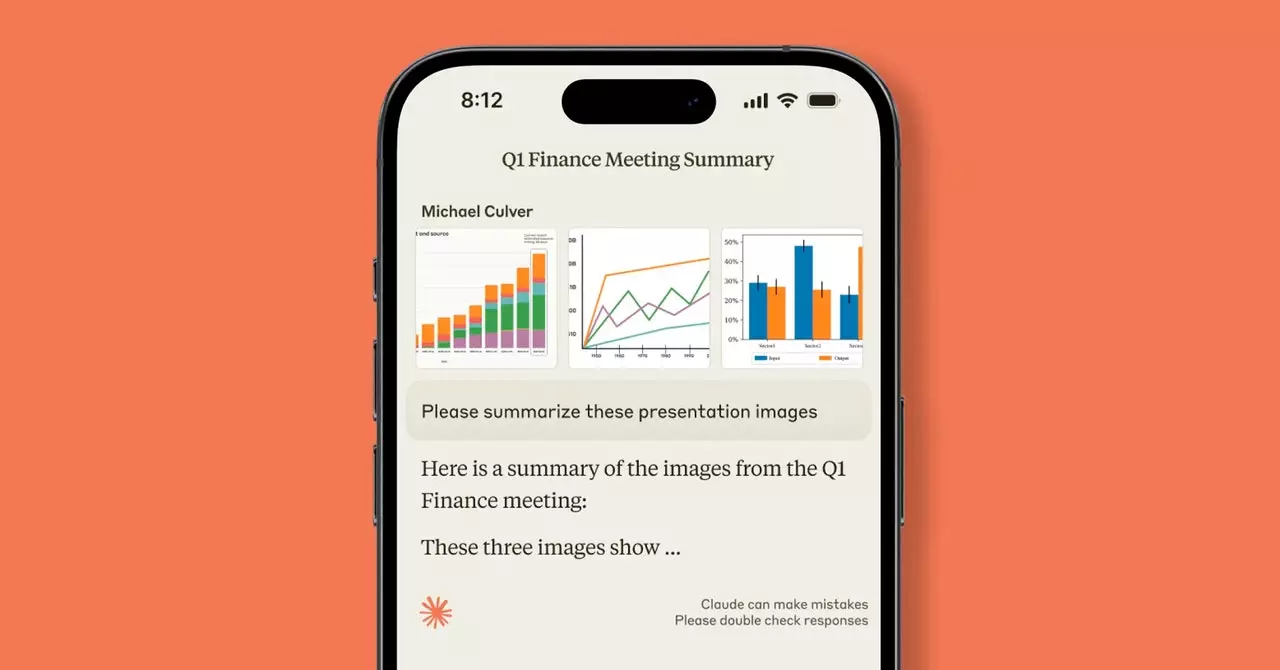In a world where Google dominates our search habits, it can be difficult to shift our mindset when interacting with chatbots. Joel Lewenstein, head of product design at Anthropic, advises that chatbots like Claude are not the same as a search engine. Instead of typing in short, concise queries, he suggests engaging in a more conversational style of communication. By providing more context and being less utilitarian in our prompts, we can elicit more useful and engaging responses from chatbots.
Anthropic’s new chatbot, Claude, incorporates AI image analysis to enhance user interactions. This feature allows users to upload images as a way to kickstart conversations with the chatbot. While the technology is still relatively new, it provides a powerful tool for quickly posing questions and receiving relevant information. Although the accuracy may vary, leveraging image analysis can add an element of fun and creativity to chatbot interactions.
When engaging with chatbots like Claude, being overly prescriptive in your prompts can help guide the conversation in the right direction. By providing clear instructions on formatting, tone, and audience, users can tailor the responses to their specific needs. Lewenstein suggests avoiding overly complex language and instead opting for direct and constructive feedback when the output does not meet expectations. This approach helps refine the conversation and ensures that the chatbot delivers the desired information.
One of Claude’s strengths lies in its ability to analyze uploaded data, particularly text documents. This feature proves to be beneficial in workplace scenarios, where the chatbot can assist with tasks such as Excel spreadsheets and email management. From spotting trends in language use to highlighting key quotes in a transcript, Claude’s document analysis capabilities offer a valuable resource for improving productivity. By uploading lengthy documents or reports, users can streamline their focus and extract essential information efficiently.
Approaching conversations with chatbots as a dynamic exchange of messages can enhance the user experience. Lewenstein emphasizes the importance of maintaining a natural flow in communication and providing continuous feedback to the chatbot. By treating the interaction as a dialogue rather than a one-way information retrieval process, users can cultivate a more engaging and personalized conversation with AI tools like Claude. The mobile app format of chatbots lends itself well to casual and interactive messaging, replicating the experience of chatting with a friend.
As chatbots continue to evolve and improve rapidly, it is essential to remain open to experimenting with different AI tools. While ChatGPT may be a preferred chatbot for some users, integrating new tools like Claude can offer a fresh and engaging alternative. With a focus on human-sounding and engaging outputs, Claude exemplifies the shift towards more interactive and personalized interactions with AI technology. By exploring the diverse capabilities of chatbots and embracing innovation, users can adapt to the changing landscape of conversational AI tools.


Leave a Reply
You must be logged in to post a comment.